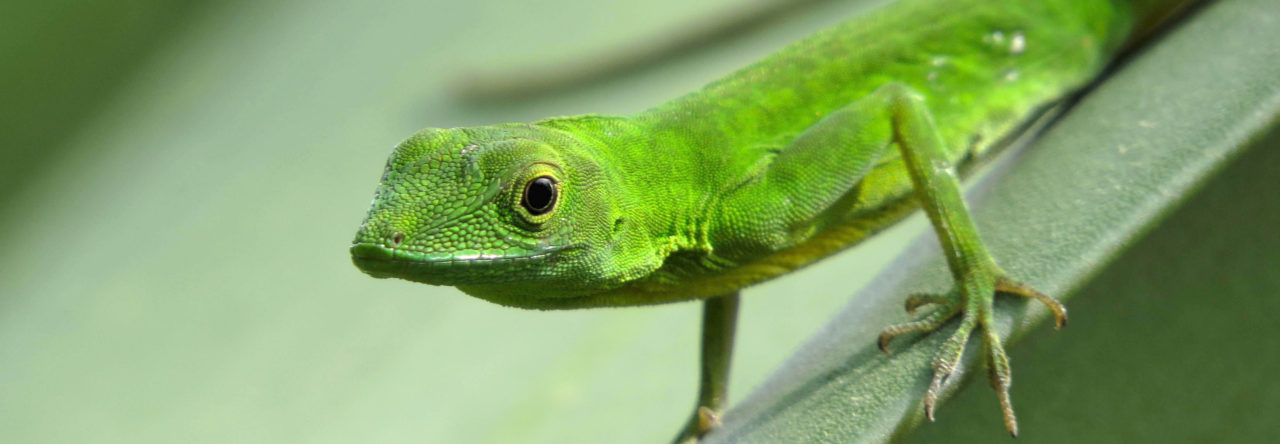In a study hot off the press, Gilles de Meester and colleagues examine the phylogenetic distribution of brain size across squamates (lizards and snakes; you can find a reference and a link to the study at the bottom). In it, the authors explore the hypothesis that larger brains evolved to allow organisms to better manage environmental complexity, through enhanced cognition and behavioral flexibility. Despite years of hypothesis testing on the subject, there is no clear consensus about its validity. De Meester et al. join the quest and investigate the relationship of brain size in 171 squamate species (including 8 anoles!) to habitat type and degree of sociality. The punchline is that snakes are the pea-brains of the squamate world. Unexpectedly, there was a strong positive relationship between degree of sociality and brain size, such that solitary species had the largest brains. And, perhaps less supported but still a trend; arboreal species generally have the largest brains, while fossorial species (those that burrow and live in the leaf litter) have the smallest.
From De Meester et al.: Ancestral state reconstruction of relative brain size (residuals of the brain to body mass regression) along the nodes and branches of the phylogenetic tree of 171 species of Squamata. Sphenodon punctatus is included as an outgroup. Species with positive residuals (blue) have large brains relative to their body size, whereas species with negative residuals (yellow–red) have small brains relative to their body size. Results were visualized using the contMap function in R (package phytools; Revell, 2012)
But, I hear you say, what of the anoles? Well, Neotropical species had the largest brains of any biogeographical region, and anoles specifically are exceptionally big brained. In fact, on delving into the supplementary material — in which De Meester et al. provide wonderful access into the brain size data that they accumulated — it reveals that Anolis stratulus, the Puerto Rican trunk-crown spotted anole, has the relatively largest brain size of any squamate!
Here is a crude figure I just whipped up from the De Meester et al. dataset. As it shows, anoles perform very well in the brain size department relative to both all squamates and within lizards specifically. Although the American green anole (A. carolinensis) does let the team down slightly…
You can read the study in full following the link below!
Gilles De Meester, Katleen Huyghe, Raoul Van Damme. 2019. Brain size, ecology and sociality: a reptilian perspective. Biological Journal of the Linnean Society, bly206.
https://doi.org/10.1093/biolinnean/bly206













